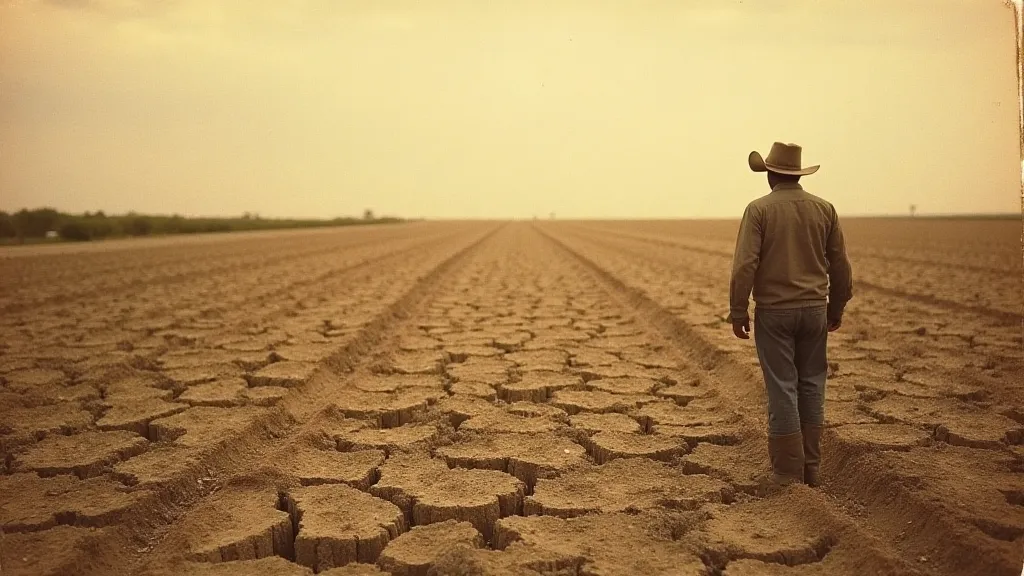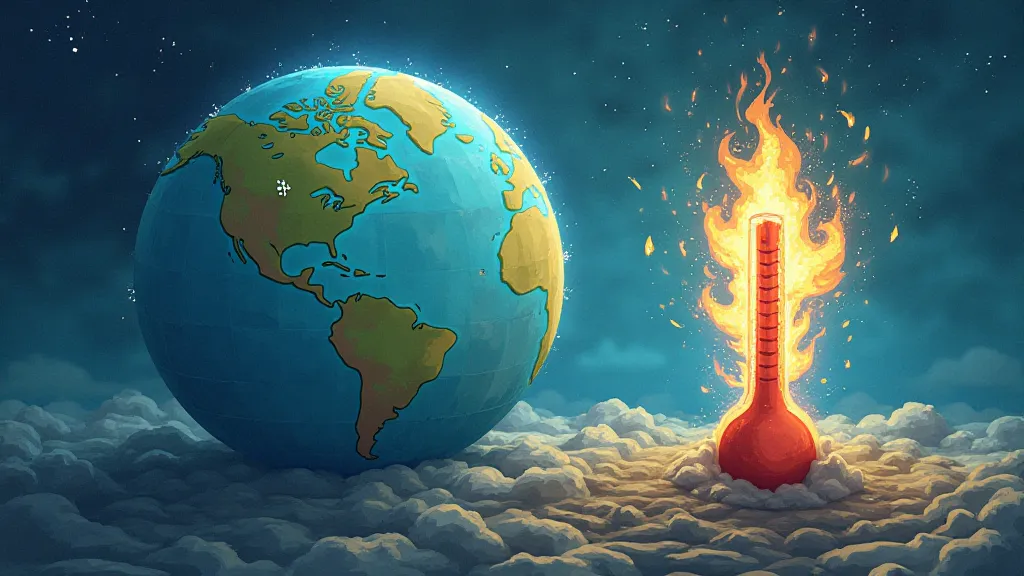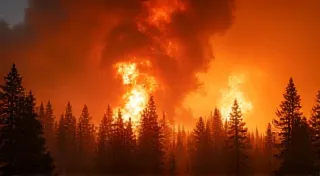Unusual Heatwaves: Examining Historical Temperature Records
The increasing frequency and intensity of heatwaves are a stark reminder of the shifting climate. But extreme heat isn’t a new phenomenon. Examining historical temperature records reveals a complex history of heat events, offering valuable context for understanding present-day trends and preparing for the future. This article analyzes historical data on extreme heat events, focusing on their frequency, intensity, and impact on human health and agriculture, performing a comparative study of past and present temperature patterns.
A Look Back: Defining “Unusual” Heatwaves
Defining an “unusual” heatwave historically is challenging. What constituted an extreme event 150 years ago would differ significantly from today's threshold, due to factors like changes in reporting methods, population density, and building practices. However, by analyzing deviations from average temperatures for a given period, we can identify events that stood out as particularly noteworthy. Early records, often based on limited observations, offer glimpses into past extremes. For example, anecdotal evidence and sparse meteorological reports frequently mention periods of prolonged intense heat impacting agricultural yields and causing localized health issues.

Early Observations and the Limitations of Data
Prior to the widespread adoption of standardized meteorological instruments, data was often scarce and inconsistent. Observations were frequently made by amateur enthusiasts or individuals like ship captains. While these records provide valuable insights, they are often geographically uneven, with denser observations in coastal areas and regions with higher population density. This uneven distribution makes it difficult to create a comprehensive picture of historical heatwave patterns across entire regions. The impacts weren't always solely related to temperature – external factors could play a significant role. Consider the situation in 1816, famously known as the 'Year Without a Summer'. This period provides a compelling example of how extraordinary events like massive volcanic eruptions could dramatically affect regional climates, illustrating climate anomalies beyond just temperature changes. It’s a fascinating case study in the power of natural forces to shape human experience – an event whose effects were so profound that they inspired literature and folklore, and continue to resonate with us today.
For instance, analyzing heatwave occurrences in the American Midwest in the 1800s relies heavily on newspaper reports, agricultural records, and personal accounts. While these sources offer compelling narratives, they lack the precision and consistency of modern weather station data. Early reporting often focused on impacts—crop failures, livestock losses, and human suffering—rather than precise temperature measurements. The severity of these events wasn’t always directly linked to simple temperature records; the broader context of environmental disruption was frequently a major contributing factor. Newspapers of the era would sometimes detail the specifics of the challenges faced by communities enduring these harsh conditions, reminding us that extreme weather has always been intertwined with human resilience and vulnerability.
The Role of Volcanic Activity and Climate Anomalies
While focusing on temperature records is vital, understanding the broader climate system reveals a history of significant disruptions beyond what simple thermometers could capture. Volcanic eruptions, for instance, have repeatedly influenced global temperatures, sometimes leading to prolonged periods of unusual weather patterns. These events can release massive amounts of aerosols into the atmosphere, reflecting sunlight and temporarily cooling the planet. It’s also worth noting that some volcanic events can lead to complex climate feedback loops, impacting regional weather patterns in surprising ways. The "Year Without a Summer" serves as a stark illustration of this phenomenon, demonstrating the potential for natural events to have cascading effects on societies and ecosystems. Understanding these complex interactions remains a crucial aspect of climate science, highlighting the interconnectedness of our planet’s systems. If you are interested in learning more about how volcanic eruptions impact regional climates, you can find a comprehensive historical analysis here.
Comparing Past and Present Heatwave Patterns
When comparing historical heatwave patterns with those of the present day, it’s crucial to account for these limitations. While isolated periods of intense heat certainly occurred in the past, the consistency, duration, and geographic extent of recent heatwaves are demonstrably different. The frequency of days exceeding certain temperature thresholds has dramatically increased in many regions. This intensification is not solely attributable to natural variability; the human contribution is increasingly significant. The historical record, while providing a context, ultimately underscores the urgency of addressing current climate change trends. The nuances of past weather events are valuable, but the overall trajectory is concerning.
Modern climate models and data analysis techniques allow for a more nuanced understanding of these changes. While natural climate variability plays a role in generating heatwaves, the human contribution—primarily through greenhouse gas emissions—is significantly amplifying their intensity and frequency. The ‘fingerprint’ of human influence is increasingly evident in observed heatwave patterns. It's easy to assume that periods of extreme weather are unique to our time, but the historical record demonstrates that unusual events have always occurred. However, the context surrounding these events often provides critical understanding.

Impacts of Historical Heatwaves: Lessons for Today
The historical record demonstrates the severe consequences of extreme heat. Past heatwaves have resulted in widespread crop failures, livestock losses, and increased mortality rates, particularly among vulnerable populations. The impacts have often been exacerbated by factors like poor infrastructure, limited access to healthcare, and inadequate public awareness. Understanding the interplay between extreme weather and societal vulnerability is essential for effective adaptation. Analyzing past episodes of intense heat, such as the challenges of the “Year Without a Summer,” reveals how vulnerable populations were disproportionately affected, highlighting the critical need for equitable adaptation strategies in the present day.
Analyzing how societies responded to past heatwaves can provide valuable lessons for building resilience today. Understanding historical coping strategies—such as community-based relief efforts, traditional building techniques, and water conservation practices—can inform contemporary adaptation measures. Furthermore, recognizing the disproportionate impact of heatwaves on marginalized communities is crucial for developing equitable and targeted interventions. These impacts weren’t uniform across populations; those lacking resources were often the most vulnerable. For instance, the "Year Without a Summer" had devastating consequences for communities in New England and Europe, leading to widespread food shortages and social unrest. The specific challenges faced by these communities highlight the complex relationship between climate events and societal resilience. Even seemingly minor shifts in climate can trigger cascading effects, emphasizing the importance of long-term planning and preparedness.
The Broader Context of Climate Variability
The observation that the climate isn’t static is a long-standing one. Beyond immediate temperature readings, long-term observations show patterns in snowfall across the planet. Analyzing these snowfall records provides a window into broader climatic shifts that may correlate with unusual temperature extremes, illustrating that heat and cold are often interlinked aspects of a dynamic climate system. The changing patterns of fog and low clouds, often linked to these broader climate shifts, have also been documented historically, providing further evidence of the complex interplay of atmospheric conditions. You can explore historical snowfall records and regional comparisons here.
Literary Reflections and Societal Impact
The effects of extreme weather events have often found their way into literature and cultural narratives, offering poignant reflections on human resilience and vulnerability. Episodes like the “Year Without a Summer” were captured in poems, songs, and stories, offering a window into the emotional and psychological toll of such events. Such literary portrayals are valuable historical documents in their own right, complementing scientific data and providing a deeper understanding of the human experience. Just as historical accounts document the climate's impact, the rustling echoes of past environmental events, like the "Great Smog," have shaped literary landscapes, prompting profound reflections on industrial impact and societal consequence. You can explore this impact here.
Conclusion: A Future Shaped by Heat
Examining historical temperature records reveals a long history of extreme heat events. While natural climate variability has always generated heatwaves, the unprecedented changes we are witnessing today are driven by human activities. By learning from the past, we can better prepare for the future, mitigating the risks posed by increasing heatwaves and building a more resilient society. The interplay between climate, society, and vulnerability is a recurring theme throughout history, and understanding this relationship is crucial for developing effective strategies to adapt to a changing world. Recognizing past responses – from traditional building techniques to community-based relief efforts – offers valuable insights for building a more resilient future, while acknowledging that current trends significantly exacerbate the potential for devastating consequences. We must not only study the temperatures but also the narratives, the literature, and the lived experiences of those who faced these challenges, to truly grasp the magnitude of the task before us.






